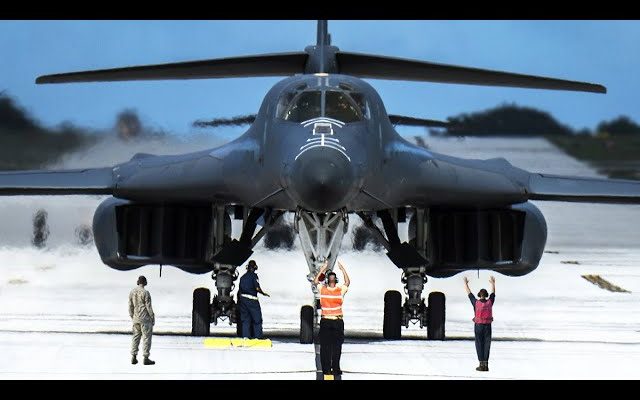The U.S. Air Force’s B-1B Lancer has long been a key component of America’s strategic bomber fleet, and recent upgrades have taken the aircraft to a whole new level of performance, shocking both military observers and global defense experts alike. The B-1B, a supersonic, long-range bomber, was originally introduced in the 1980s and has undergone several significant upgrades over its service life. However, the latest round of improvements has sparked widespread attention due to its ability to adapt to modern warfare and technological advancements.
The B-1B Lancer’s most recent upgrades focus on enhancing its versatility, survivability, and lethality in an increasingly complex and dangerous global landscape. The airframe itself has been reinforced with more advanced materials to extend its lifespan, while its avionics systems have been overhauled to integrate modern digital technologies. These upgrades ensure that the B-1B remains competitive and capable of executing a wide range of missions, from conventional strikes to nuclear deterrence.
One of the most notable improvements is the B-1B’s upgraded radar system. The new radar technology allows the bomber to operate more effectively in contested environments, giving it a significant advantage in situations where electronic warfare capabilities are a factor. With the ability to detect and evade advanced anti-aircraft systems, the B-1B has become a more survivable asset in high-threat areas. This is particularly important given the growing sophistication of adversary defense systems, which have made older bombers like the B-52 more vulnerable to interception.
Another key feature of the upgrade is the aircraft’s enhanced weapons payload. The B-1B now has the ability to carry a wider variety of munitions, including precision-guided bombs and air-launched cruise missiles, making it a more flexible platform for diverse mission sets. The increased payload capacity is especially crucial in the context of modern warfare, where rapid precision strikes are often necessary to neutralize high-value targets before they can retaliate.
The integration of new data links and communication systems also allows the B-1B to operate more seamlessly within joint and coalition forces. This connectivity enhances its ability to coordinate with other military assets, such as fighter jets, drones, and ground forces, enabling more effective and synchronized strike operations. The ability to share real-time intelligence and operational data ensures that the B-1B can be deployed in complex, multi-domain operations, further extending its relevance in a modern conflict environment.
In addition to the technical upgrades, the B-1B’s flight performance has been enhanced as well. Improvements to its engines and aerodynamic design have allowed the aircraft to fly faster, more efficiently, and at higher altitudes. This means the B-1B can cover more ground in less time, giving it the ability to respond to threats more rapidly and reach more distant targets without compromising its fuel efficiency or range.
The latest upgrades to the B-1B Lancer have undoubtedly shocked the world, as they position the aircraft to remain a cornerstone of the U.S. Air Force’s long-range strike capability for years to come. With the threat landscape evolving rapidly, the B-1B’s combination of advanced technology, increased survivability, and improved performance ensures that it will continue to be a key asset in the U.S. military’s arsenal, both in conventional and nuclear deterrence roles.



